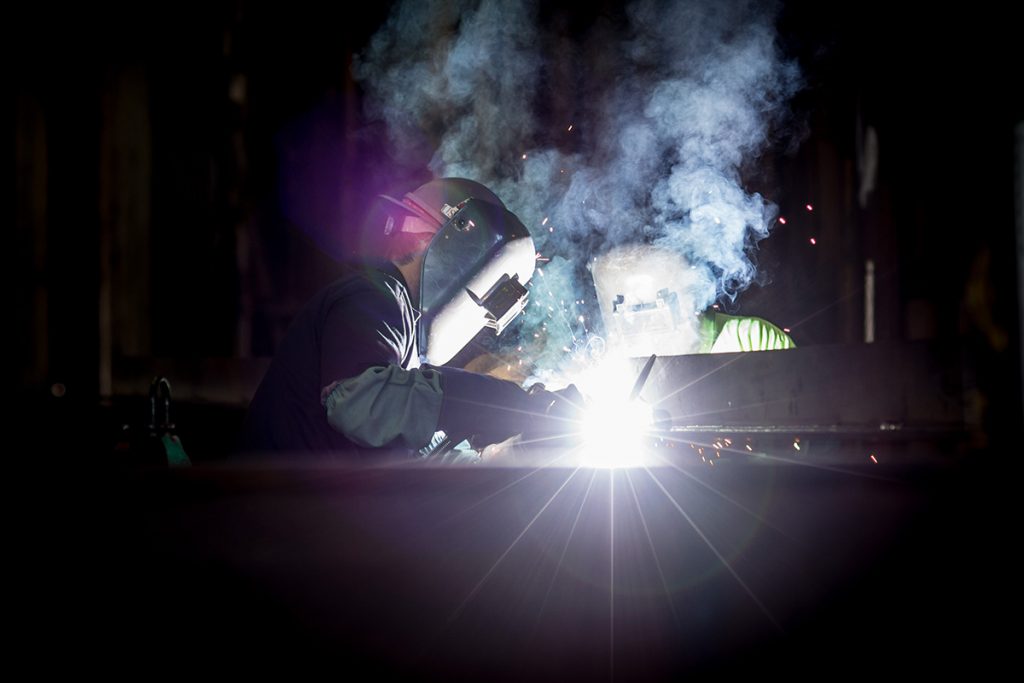 In 2017, the International Agency for Research on Cancer (IARC) classified welding fumes as “carcinogenic to humans”, an upgrade on its previous 1989 status as a “possible” cancer-causing agent.
In 2017, the International Agency for Research on Cancer (IARC) classified welding fumes as “carcinogenic to humans”, an upgrade on its previous 1989 status as a “possible” cancer-causing agent.
Ultraviolet (UV) radiation from welding was also classified as carcinogenic, while molybdenum trioxide – a chemical sometimes used in welding – was classified as possibly carcinogenic by the IARC working group.
In particular, welding fumes and UV radiation have been identified as causing lung cancer and ocular (eye) melanoma, with the possibility of both also being linked to other cancers.
With an estimated 11 million welders worldwide and 110 million other workers who are likely exposed to welding activities, the need for safe practices to reduce the risk of disease is critical.
Welding fumes:
Welding fumes are produced when metals from the wire, electrode, base metal and metal coatings evaporate and then condense as a vapour.
The majority of fumes are usually particles of metallic oxides, silicates and fluorides, which can cause cancer.
Some common fume types include beryllium, cadmium oxides, chromium and nickel. Beryllium, cadmium and some forms of chromium and nickel are all known carcinogens.
The main factors which affect exposure to welding fumes include the welding process, type of metal, ventilation, degree of enclosure and use of personal protective equipment (PPE).
For example, stainless steel welding fumes can contain as much as 10 times more chromium and nickel than mild steel welding fumes, while manual metal arc welding of stainless steel produces a higher concentration of chromium fumes than gas metal arc or gas tungsten arc welding. There was strong evidence that welding fumes induce chronic inflammation and suppress the immune system. Moderate evidence also supported development via oxidative stress, genotoxicity (destructive impact on genetic material) and negative influence on cell production and death.
Ultraviolet (UV) radiation:
Electric arc and laser welding also give off UV radiation, which is carcinogenic and a known cause of ocular melanoma.
Typically arc welding produces much higher levels of UV radiation than both natural sunlight and other processes generating UV radiation.
The factors affecting exposure include the type of welding, the intensity of the radiation, the length of exposure and the distance from the welding activity.
Welders can be exposed directly, from radiation produced by the arc, as well as indirectly from radiation that bounces off hard surfaces around them.
Co-exposures:
The IARC working group also reported that several studies had found an association between welding and mesothelioma, indicating that welders often face co-exposure to asbestos.
Other co-exposures include solvents and tobacco smoke, with a 2012 study finding that welding fumes increased the risk of lung cancer in light smokers, but not in moderate to heavy smokers.
In addition to cancer, welders are also at risk of developing other disorders, such as asthma, bronchitis, lung function disorders, neurological disorders and renal tubular dysfunction.
Safe welding:
Employers have a legal responsibility to provide a safe working environment for their employees, while workers must follow all reasonable health and safety directions, as well as take care of their own health and safety. The health and safety of bystanders and other workers should also not be put at risk by the work being undertaken.
In addition to carcinogens, welding has many other dangers that should be eliminated or reduced using the hierarchy of control, with PPE used as a last line of defence.
In particular, to reduce the risk of cancer from welding fumes and UV radiation, welders can:
- Remove paints and solvents from surfaces before welding.
- Choose welding processes that reduce fumes or UV radiation.
- Use local exhaust and forced dilution ventilation.
- Wear respiratory protection that filters particulates and UV protective eyewear. Ensure it is fit for the task and worker.
- Separate welding from other tasks to protect other workers.
- Automate welding activities where possible.
- Rotate job tasks between workers to reduce the duration of exposure.
- the type of welding process used
- the material being welded (including any surface coatings or metal treatments)
- the contaminants in the air (for example vapours from solvent cleaners or degreasers)
- the consumables being used
- shielding flux or gas
- the power settings
- where the welding is being carried out (outside or in an enclosed space), and
- the length of time welding
For further details, view the ProChoice blog post on welding fumes here or view the Cancer Council's page on welding here





